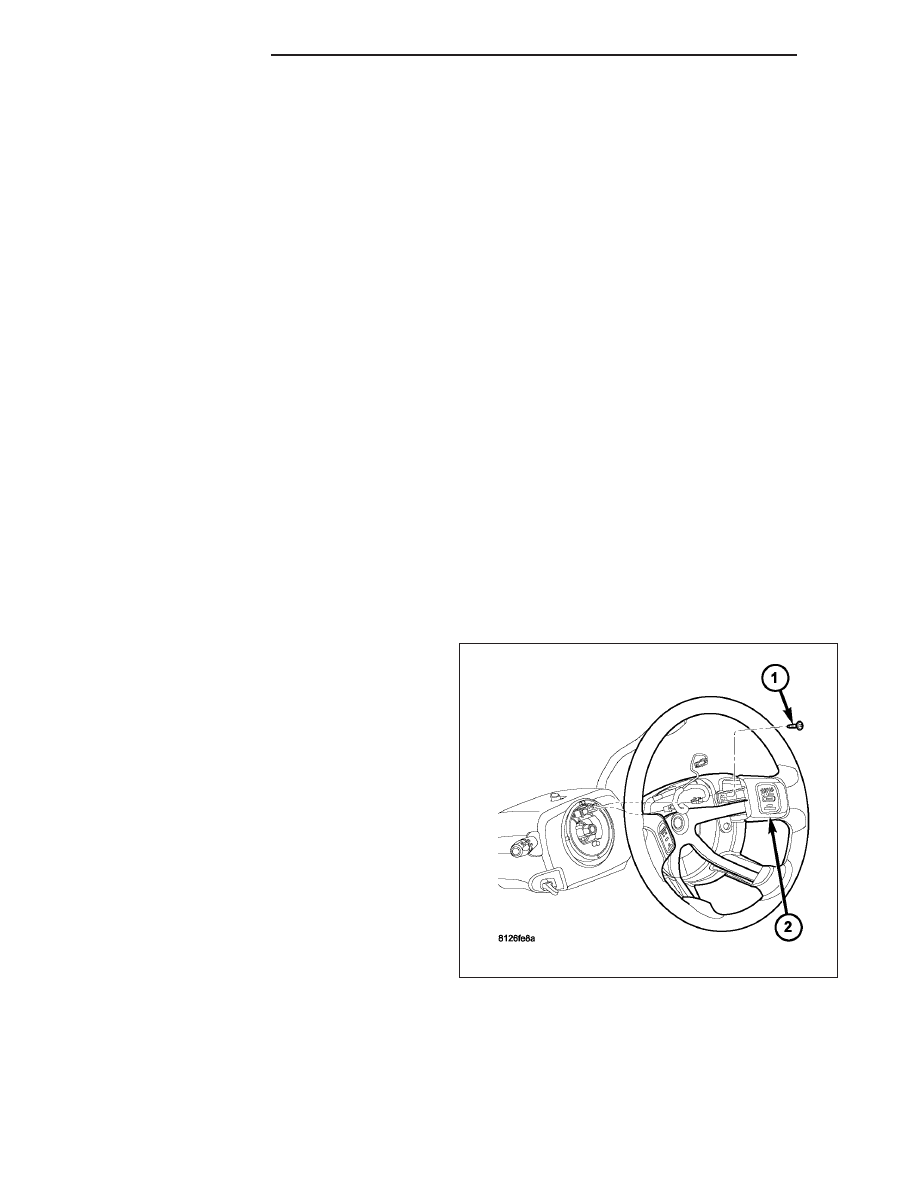Jeep Grand Cherokee WK. Manual - part 670

•
Depressing the OFF switch
•
Depressing the CANCEL switch.
The speed control can be disengaged also by any of the following conditions:
•
An indication of Park or Neutral (auto. trans.)
•
The VSS signal increases at a rate of 10 mph per second (indicates that the co-efficient of friction between the
road surface and tires is extremely low)
•
Depressing the clutch pedal (manual trans.).
•
Excessive engine rpm (indicates that the transmission may be in a low gear)
•
The VSS signal decreases at a rate of 10 mph per second (indicates that the vehicle may have decelerated at
an extremely high rate)
•
If the actual speed is not within 20 mph of the set speed
The previous disengagement conditions are programmed for added safety.
Once the speed control has been disengaged, depressing the ACCEL switch restores the vehicle to the target
speed that was stored in the PCM’s RAM
NOTE: Depressing the OFF switch will erase the set speed stored in the PCM’s RAM.
If, while the speed control is engaged, the driver wishes to increase vehicle speed, the PCM is programmed for an
acceleration feature. With the ACCEL switch held closed, the vehicle accelerates slowly to the desired speed. The
new target speed is stored in the PCM’s RAM when the ACCEL switch is released. The PCM also has a
9
tap-up
9
feature in which vehicle speed increases at a rate of approximately 2 mph for each momentary switch activation of
the ACCEL switch.
The PCM also provides a means to decelerate without disengaging speed control. To decelerate from an existing
recorded target speed, depress and hold the COAST switch until the desired speed is reached. Then release the
switch. The ON, OFF switch operates two components: the PCM’s ON, OFF input, and the battery voltage to the
brake switch.
REMOVAL
WARNING: BEFORE ATTEMPTING TO DIAGNOSE,
REMOVE OR INSTALL ANY AIRBAG SYSTEM OR
RELATED
STEERING
WHEEL
AND
STEERING
COLUMN COMPONENTS YOU MUST FIRST DIS-
CONNECT
AND
ISOLATE
THE
NEGATIVE
(GROUND) BATTERY CABLE. WAIT 2 MINUTES
FOR
SYSTEM
CAPACITOR
TO
DISCHARGE
BEFORE FURTHER SYSTEM SERVICE. FAILURE
TO DO SO COULD RESULT IN ACCIDENTAL
DEPLOYMENT
AND
POSSIBLE
PERSONAL
INJURY.
1. Disconnect and isolate negative battery cable from
battery.
2. Remove airbag module. Refer to Restraint Sys-
tems.
3. Unplug electrical connector.
4. Remove speed control switch mounting screw (1)
and remove switch from steering wheel.
8P - 12
SPEED CONTROL
WK